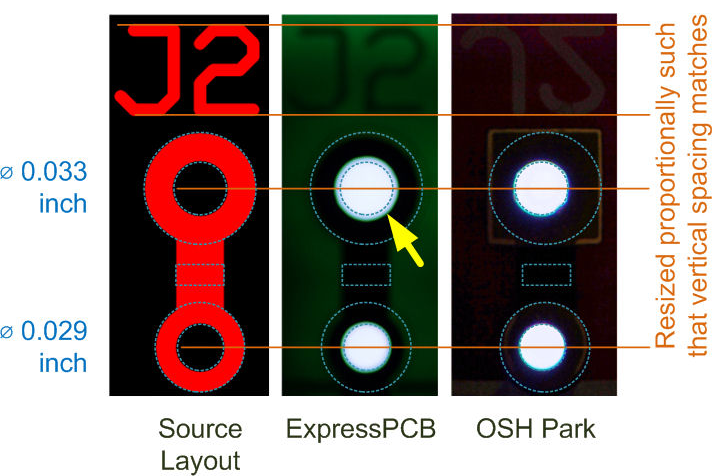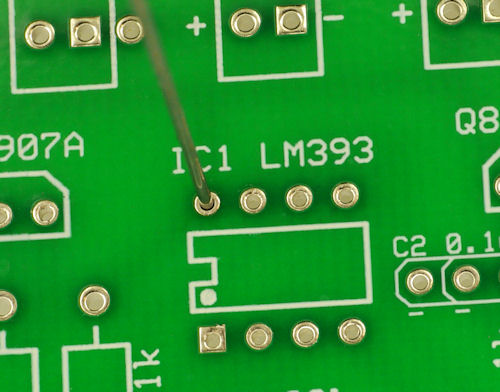Abstract
A CNC drill machine with one or many drill heads can drill all the different hole sizes needed at high rate. Machines themselves differ by speed, PCB Drill Sizes and even x-ray ptimization.
When a PCB is made there are a couple of things to kept in mind as it relates to drilling; that is, the size of the holes and the type of hole.

Content
As it relates to hole size, consider the aspect ratio relative to the manufacture of the PCB. Aspect ratio is the ratio between the thickness of the board and the size of the drilled hole before plating and is used as a guide to ensure that a manufacturer does not exceed the mechanical capability of the drilling equipment or the available drill sizes.
Some common material thicknesses and corresponding PCB drill sizes:
0.031″ Thick – Smallest Hole 0.006″ (smallest BAC can do mechanically)
0.062″ Thick – Smallest Hole 0.006″
0.093″ Thick – Smallest Hole 0.009″
0.125″ Thick – Smallest Hole 0.012″
0.062″ Thick – Smallest Hole 0.006″
0.093″ Thick – Smallest Hole 0.009″
0.125″ Thick – Smallest Hole 0.012″
Us the "preferred minimum hole size" on their PCB board designing company website.

Fig.(2)
In practice, there is a balance between:
1.If you make the vias too big, they require lots of space on your PCB (on every layer), making it more difficult to route and perhaps requiring a bigger, more expensive PCB.
2.If you make the vias a little too small (less than the "preferred minimum hole size" of a particular manufacturer), then that particular manufacturer will claim it requires a "special process" which adds expense.
3.If you make the vias much too small (less than the "absolute minimum hole size" of a particular manufacturer), then that manufacturer can't make it at all, and you'll be forced to find a different (probably more expensive) manufacturer or redesign the board.
The "metal barrel" of a via is practically free if you have any plated through holes. The PCB fab throws the PCB in the through-hole-plating bath until an appropriate thickness of metal grows in every hole.

Fig.(3)
Many manufacturers publish their "standard hole sizes" (standard drill bit sizes minus the standard barrel thickness of through-hole metal plating). The man running the drill press prefers to see standard sizes; otherwise he is forced to either (a) pick the next-smaller standard drill bit -- then the physical part won't fit in the hole; (b) pick the next-larger drill bit -- this pushes the through-hole metal plating out, possibly hitting some internal trace and rendering the entire board unusable; or (c) reject the board as unmanufacturable. To avoid all 3 problems, often PCB designers "round up" non-standard hole sizes to the next larger standard hole size -- i.e., often holes for DIP packages are rounded up to 0.9 mm diameter -- and then run the DRC check. If the DRC finds any traces that are now "too close" to the bigger hole, the designer pushes those traces a safe distance away before sending the design to the manufacturer.
Source:
Comments
Post a Comment